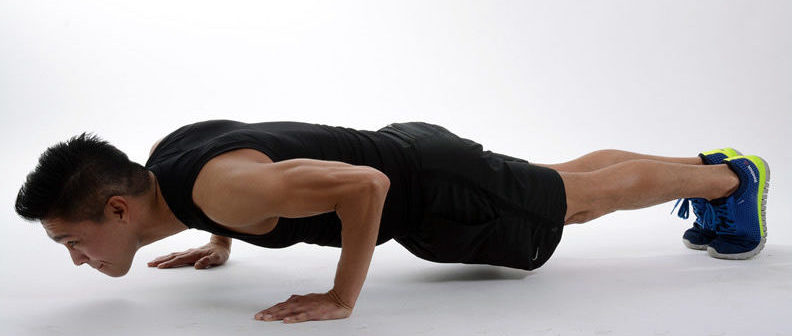Before you start an exercise program, consult your physiotherapist.
We would like to introduce you to some common fitness terms that you are likely to hear and use regularly.
Aerobic exercise is exercise in the presence of oxygen. In other words, your body is burning its fuel (glucose) in the presence of oxygen. It is performed at less than 85% of your maximum heart rate and aerobic activity is any exercise that is done continuously for over three minutes’ duration. An aerobically fit individual can work longer, more vigorously and achieve a quicker recovery at the end of the aerobic session. Jogging, cycling, swimming, aerobics classes, and rowing are examples of aerobic exercise.
Anaerobic exercise is working at higher than 85% of your maximum heart rate. It involves short bursts of exertion followed by periods of rest. Anaerobic means in the absence of oxygen. In other words, it is the burning of glucose, by the body, without the use of oxygen. Weight training and short bursts of sprinting are examples of anaerobic exercise.
Body mass index (BMI) A number that describes a body’s relative weight and strongly correlates to total body fat content in adults. In other words, it is a measurement of how heavy you are for your height.
Bosu ball is an exercise ball that’s been cut in half with a platform on the bottom. It is used for a wide variety of strength and balance exercises.
Circuit training is selected weight-training exercises performed one after another in an exercise sequence, usually using lighter weights and short periods of rest.
Contraction is the act of shortening that takes place when muscle fibers generate tension. For example, muscle contraction of the biceps occurs when the elbow is bent.
Cool down Gradually reducing the intensity of exercise for several minutes at the end of a session to stabilize the cardiovascular system after a workout.
Core strength is the strength of large muscle group stabilizing muscles such as the abdominal muscle group.
Cross training is the use of more than one type of exercise to achieve your training goals.
Endurance activities/training Repetitive, aerobic use of large muscles (as with such activities as walking, cycling, swimming, etc.)
Endurance The body’s ability to resist fatigue; includes muscular endurance and cardiorespiratory endurance.
Exercise ball is a large, inflated rubber ball 55 to 85+ centimeters in diameter used for strength, balance, and flexibility exercise. Also known as therapy ball or Swiss ball.
Flexibility is the total range of motion in a joint or joints.
Heart rate A measurement of the work done by the heart, most commonly expressed as the number of heart beats per minute (bpm).
Hypertension Abnormally high blood pressure, usually defined as systolic pressure higher than 140 mmHg or diastolic pressure higher than 90 mmHg.
Interval training A workout session that involves repeated short, fast-paced bouts of exercise separated by short rest intervals.
Lactic acid Anaerobic exercise produces lactic acid, which quickly forms lactate in the muscles, so these terms (“lactate” and “lactic acid”) are often used interchangeably.
Maximum heart rate (HRmax) The highest number of heart beats per minute (bpm) when pushing the body as hard as possible. HRmax-p score (in all Polar S-series Heart Rate Monitors) predicts your individual maximum heart rate. The most accurate way of determining your individual HRmax is to have it clinically measured in maximal exercise stress test in a laboratory. HRmax is a useful tool for determining the intensity of exercise.
Medicine ball are weight balls of various sizes and weights, used for resistance or plyometric training.
Over-training The attempt to do more work than the body can physically tolerate.
Physical activity Any movement of the body produced by the muscles that results in increased energy expenditure.
Plyometric are exercises characterized by the application of a quick muscle stretch followed by rapid muscle shortening enabling muscle(s) to achieve maximal rates of force development. They are intended to improve reactive/explosive muscle performance.
Progressive resistance exercise is exercise whereby load or resistance is applied to a muscle and is increased over time. For example, increasing the number of weights and the number of sets. This is done for strengthening.
Proprioception is the body’s ability to sense where it is in space. For example, close your eyes and touch your nose. How were you able to move your finger to your nose without seeing it? Your body uses its sensory system in the joints and muscles to know where it is going. Balance and coordination both depend on your body’s proprioceptive skills.
Resistance training is the use of external force to build up the body’s ability to exert muscular force. Also known as weight or strength training.
Resting heart rate (HRrest) The number of heart beats in one minute (bpm) when a person is at complete rest. A person’s HRrest decreases as they become more fit.
Sets are a specific number of repetitions. For example, if you lift a weight 10 times, rest, and lift the weight 10 times again, you have performed “two sets” of 10 repetitions.
Strength is a muscles ability to generate force. It is usually measured with a one repetition maximum.
Tapering A reduction in training intensity before a major competition to give the body and mind a break from the rigors of intensive training.
Target heart rate is your target heart rate is a range you exercise in and should be 60-85% of your maximum heart rate. (220 – age) x 60% = bottom end of Target Heart Range, (220 – age) x 85% = top end of Target Heart Range Exercise is considered aerobic if performed within this range.
Warm up is a period of gradual exercise to increase circulation to the muscles and joints, in preparation for exercise of a greater intensity.
These are just a few of the most basic terms you would encounter; as always, we will clarify anything you may have questions about.
Website: http://panoramaphysio.ca/view/lib/fitness-terminology/42


